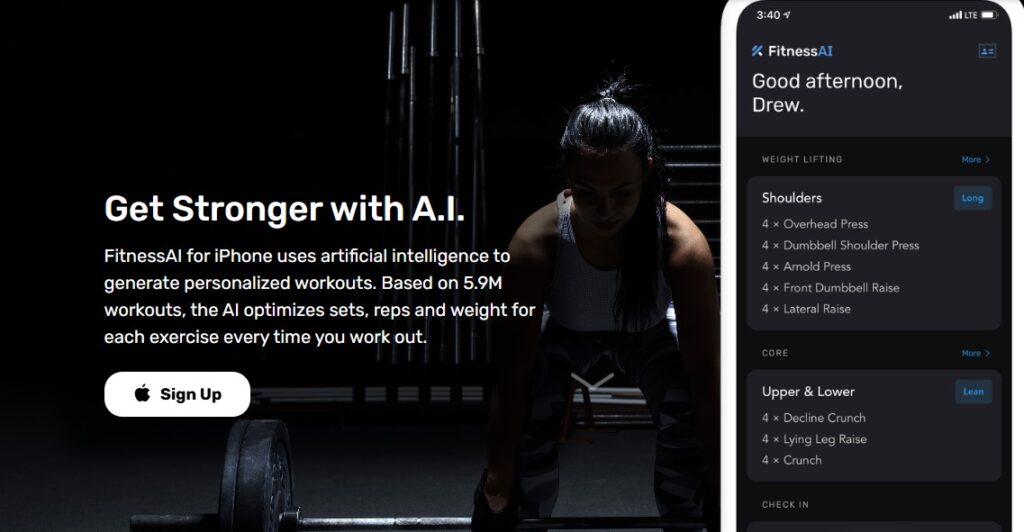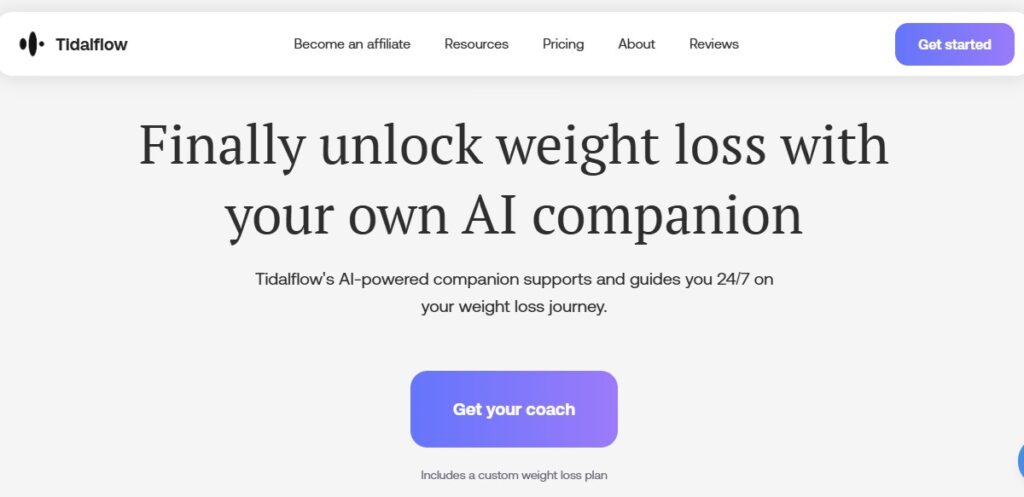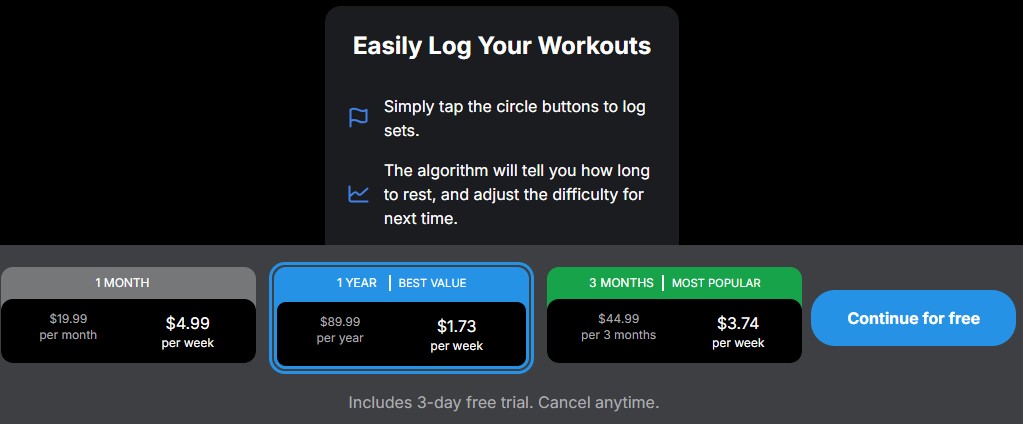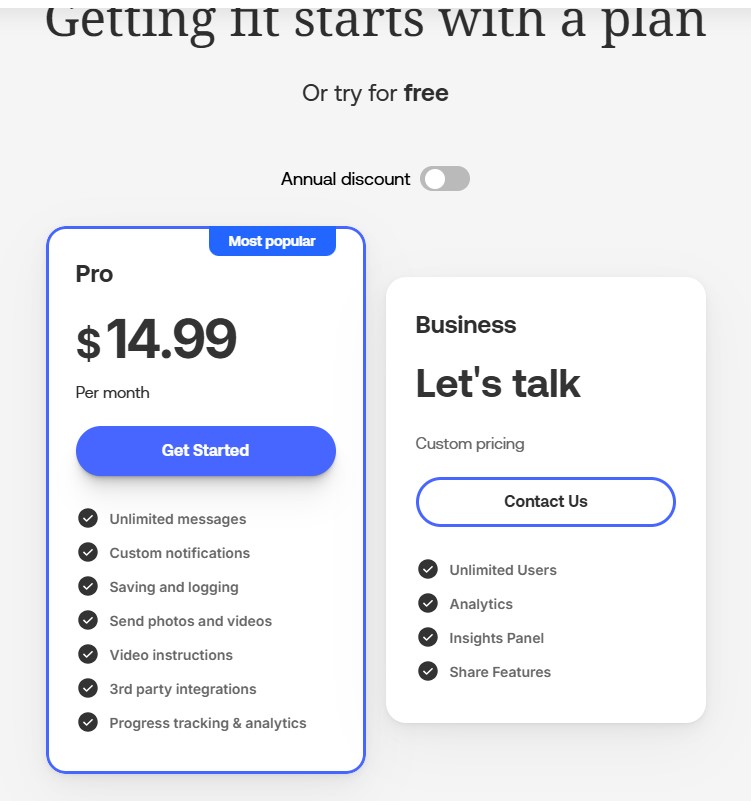FitnessAI vs TidaFlow: The Best AI Health Coach in 2024
Are you searching for an AI-powered heaour fitness journey? FitnessAI and TidaFlow, innovative platforms, promise to elevate your workouts and…

Are you searching for an AI-powered heaour fitness journey?
FitnessAI and TidaFlow, innovative platforms, promise to elevate your workouts and health goals.
But which one is the right fit for you?
Let’s dive into a comprehensive comparison that covers features, pricing, usability, and much more. Whether you’re a gym enthusiast or someone seeking a personalized health coach, this FitnessAI vs TidaFlow guide will help you make an informed decision.
Overview of AI-Powered Health Coaches
If you’ve been paying attention to the fitness world lately, you’ve probably noticed AI-powered health coaches are everywhere. It’s not just about counting steps or tracking calories anymore—these tools are leveling up the game with personalized, data-driven plans that adapt to your goals and progress. They’re like having a trainer, nutritionist, and wellness coach in your pocket. And honestly? It’s kind of wild how far this tech has come.
The idea behind AI in fitness is pretty simple: leverage machine learning to create tailored plans for individuals based on data like workout history, lifestyle habits, and even sleep patterns. Unlike traditional apps that stick to cookie-cutter routines, these AI coaches continuously adjust and refine your plan based on your performance.
If your squat form improves or your endurance increases, your coach notices and tweaks your program accordingly. It’s like the app is always paying attention—even when you’re not.
Now, two big names in this space are FitnessAI and TidaFlow.

Both are shining examples of how artificial intelligence is reshaping the fitness and wellness industry, but they do it in different ways. FitnessAI is more of a no-nonsense gym buddy, perfect for people who love structured strength training and progress tracking. On the other hand, TidaFlow takes a more holistic approach, focusing on the whole person—fitness, mindfulness, and even nutrition. It’s less about PRs (personal records) and more about balance.

It’s easy to see why these apps are gaining traction.
For one, they’re incredibly convenient. You don’t need to shell out big bucks for a personal trainer or worry about finding time for nutrition consultations. Everything you need is right there on your phone. Plus, these tools can help eliminate a lot of guesswork. Ever stared at a rack of dumbbells and thought, What should I even do today? Yep, me too. AI-powered coaches take that stress off your plate.
That said, not every app is for everyone. Some people thrive with the gym-centric focus of FitnessAI, which builds workout plans based on strength progression and integrates seamlessly with wearables like Apple Watch. Others prefer TidaFlow’s all-in-one dashboard that blends fitness with guided meditations and meal planning tools. It really depends on what you’re looking for—are you chasing gains or chasing zen?
The best part?
Both platforms reflect a broader trend: the rise of smart, adaptive fitness tools that meet users where they are. Whether you’re a seasoned gym-goer or someone just trying to manage stress and feel healthier, there’s an AI coach out there that can help you crush your goals. The real question is figuring out which one matches your vibe. Don’t worry—we’ll get into that next!
Features Comparison – FitnessAI vs TidaFlow
For picking between FitnessAI and TidaFlow, it’s all about understanding the features each offers—and how those fit your goals.
These two platforms may both wear the AI health coach badge, but their approach to fitness and wellness is like night and day. Let me break it down for you.
FitnessAI: Built for Strength Junkies
If you love strength training and numbers, FitnessAI might feel like a match made in fitness heaven. This app’s main selling point is its personalized workout plans, which are laser-focused on progressive overload. Not familiar with that term? It’s the gradual increase of stress on your muscles over time—a proven method to build strength. FitnessAI tracks your progress meticulously, so you’re not just lifting for the sake of lifting. It tells you exactly how much weight to add or how many more reps to aim for next time.
Another feature I appreciate is the integration with wearable devices like the Apple Watch. Tracking your workouts becomes a breeze, and the app’s performance metrics give you an easy-to-read snapshot of your progress. You know that feeling when you hit a new PR, and you’re itching to share it? FitnessAI logs it automatically and even celebrates those milestones with you.
But keep in mind, FitnessAI is more of a gym-focused tool. If you’re someone who prefers a holistic approach—or you’re looking for guidance beyond just physical exercise—you might find it lacking. There are no mindfulness or nutrition features here; it’s purely about the grind.
TidaFlow: A Holistic Health Powerhouse
On the other hand, TidaFlow feels like the Swiss Army knife of health coaching. It doesn’t just focus on fitness; it’s got mindfulness, nutrition, and stress management in the mix, too. Think of it as your one-stop shop for overall wellness.
One of TidaFlow’s standout features is its guided meditation library. It’s not just for yoga enthusiasts, either. I tried one of their 10-minute stress-relief sessions after a chaotic Monday, and let me tell you—it was like hitting a mental reset button. The app also offers AI-driven diet recommendations based on your fitness goals, whether that’s weight loss, muscle gain, or just maintaining a healthy balance.
And then there’s the multifunctional dashboard. It’s super user-friendly and keeps all your health data—workouts, meals, mindfulness sessions—in one place. The app even syncs with popular wearables, but instead of just spitting out numbers, it interprets them to give actionable insights. For example, if your recovery data shows you’ve been overdoing it, TidaFlow might suggest a low-intensity day with stretching and meditation.
Key Takeaway: Pick Your Priorities
The biggest difference here is focus. FitnessAI is for those who want to crush strength training goals with precision. TidaFlow, meanwhile, is perfect if you’re looking for a broader approach to wellness that balances fitness, nutrition, and mental health.
Ultimately, both apps offer a wealth of features, but how you use them depends on what you want to achieve. If lifting heavier and tracking numbers is your jam, FitnessAI won’t disappoint. But if you’re after a more well-rounded tool that cares about your mind as much as your body, TidaFlow might just steal your heart—and your stress.
User Experience and Interface
With apps, let’s be real—if the interface feels clunky or confusing, you’re probably not going to stick with it. Both FitnessAI and TidaFlow shine in their own ways here, but they cater to different types of users. Let’s talk about what it’s like to actually use these apps day-to-day.
FitnessAI: Streamlined for Gym-Goers
FitnessAI keeps things super simple, which is one of its biggest strengths. The app’s interface is clean and focused—perfect for gym lovers who don’t want to spend 15 minutes figuring out what to do next. Open the app, and boom—it shows you exactly what’s on deck for your workout that day. There’s no fluff, no distractions. Just the essentials.
One feature I particularly like is how the app organizes exercises. You get detailed instructions for each movement, including sets, reps, and even the exact weight to use based on your progress. It’s great for those moments when you’re standing in front of a squat rack and second-guessing yourself. Plus, the integration with wearable devices means you can track everything seamlessly without having to manually log details.
That said, the minimalist approach can feel a bit limiting if you’re someone who likes exploring extra tools or features. The focus is squarely on gym workouts, so if you’re looking for variety—like yoga or recovery routines—you won’t find it here. But for someone who just wants a no-fuss, gym-focused experience? FitnessAI nails it.
TidaFlow: A Dashboard for Holistic Wellness
TidaFlow’s interface, on the other hand, is like a buffet of options. The dashboard feels a little busier than FitnessAI’s, but that’s because it’s designed to manage more aspects of your health. Workouts, mindfulness sessions, meal planning—it’s all there, neatly categorized and easy to access.
One thing I love about TidaFlow is how intuitive it feels. For example, when I first signed up, it walked me through a quick onboarding quiz to understand my fitness level, dietary preferences, and stress levels. From there, the app automatically built a daily plan tailored to my goals. Want to swap a workout for a meditation session? No problem. The app makes those adjustments seamlessly without throwing off your progress tracking.
It also has this “insight” feature where it explains why it’s suggesting certain activities or meals. For instance, if your stress data shows a spike, it might recommend a calming yoga session instead of an intense HIIT workout. That kind of personalization makes TidaFlow feel more like a coach who actually gets you, rather than just an app.
Which Experience Is Better for You?
This really comes down to what kind of user you are. FitnessAI’s straightforward design is perfect for people who are laser-focused on strength training and don’t want to deal with extra bells and whistles. It’s efficient, clear, and gets the job done without overcomplicating things.
TidaFlow, on the other hand, is ideal for users who enjoy exploring multiple aspects of wellness in one app. The interface might take a little longer to get used to because there’s so much to offer, but once you’re familiar, it’s like having a personal health assistant at your fingertips.
So, if you’re someone who wants a streamlined gym experience, FitnessAI is your go-to. But if you’re the type to say, “Hey, I want fitness and mindfulness and nutrition guidance all in one place,” TidaFlow’s dashboard will feel like a dream come true.
Pricing and Subscription Models
Let’s talk money—because let’s be honest, even the most feature-packed app isn’t worth it if it blows your budget. Both FitnessAI and TidaFlow come with subscription models that cater to different user needs, but the value you get depends on how you plan to use the app. Here’s a closer look at their pricing structures.
FitnessAI: Affordable for Gym Enthusiasts

FitnessAI offers a straightforward pricing model, which makes it easy to decide if it’s worth your investment. There’s a free trial period (typically around 3 days), so you can test the waters before committing. After that, subscriptions are available in monthly or annual plans. The annual plan usually costs about $90 per year, which breaks down to $8 per month—a solid deal if you’re serious about strength training.
One thing to note is that FitnessAI doesn’t really have a “freemium” option. If you want access to its personalized workout plans and progress tracking, you’ll need to pay for a subscription. While that might feel like a downside, the app’s laser focus on gym workouts ensures you’re getting value for every dollar spent. And compared to the cost of hiring a personal trainer, it’s a steal.
TidaFlow: A Premium Wellness Investment

TidaFlow, on the other hand, leans more into the premium category. It also offers a free trial—usually 14 days—so you can explore its features without any upfront cost. After that, pricing starts at around $15 per month if you choose the annual plan, or closer to $20 for a month-to-month subscription.
It’s definitely a bit pricier than FitnessAI, but considering the broader range of features—like guided meditations, AI-driven meal plans, and stress management tools—it’s not hard to see why.
One thing I like about TidaFlow is its tiered subscription options. There’s a basic plan for users who just want fitness and mindfulness tools, and a premium plan that adds advanced nutrition tracking and one-on-one coaching sessions with a real wellness expert. The premium tier can climb up to $30 per month, but for someone who values that level of guidance, it could be well worth it.
Cost vs. Benefit: What’s the Better Deal?
So, which one gives you more bang for your buck? If your primary goal is to optimize your strength training without a lot of extra frills, FitnessAI’s pricing is tough to beat. At $10 per month on the annual plan, it’s affordable and delivers exactly what it promises—nothing more, nothing less.
TidaFlow, on the other hand, is for users who want a more holistic approach to wellness. Yes, it’s pricier, but the additional tools—like stress management and tailored meal plans—offer value that FitnessAI doesn’t. If you’re someone who sees health as a combination of physical, mental, and nutritional wellness, TidaFlow’s higher price tag might feel justified.
Pro Tip: Take Advantage of Free Trials
Before you commit, take full advantage of the free trials both apps offer. Spend that week or two diving into the features, experimenting with the plans, and seeing how the app fits into your daily routine. Also, keep an eye out for promotions—both apps occasionally offer discounts on annual plans, especially during holidays or fitness-focused months like January.
In the end, the choice boils down to your priorities. If budget is a major concern, FitnessAI is the clear winner. But if you’re ready to invest a little more for a well-rounded health experience, TidaFlow could be worth every penny.
Who Should Choose FitnessAI?
If you’re someone who lives for the clang of weights hitting the floor or the feeling of pushing yourself to the next PR, FitnessAI is probably your new best friend. It’s a no-nonsense app designed for people who take their strength training seriously—and for those who like seeing measurable progress in black and white.
Perfect for Strength Trainers and Gym-Goers
FitnessAI is built with strength training enthusiasts in mind. Its core focus is on progressive overload, which is one of the most effective methods for building strength and muscle. The app eliminates guesswork by telling you exactly how much weight to lift and how many reps to do, based on your past performance. It’s like having a personal trainer in your pocket, minus the hefty price tag.
One of my favorite features is how it adapts over time. For example, after I struggled with deadlifts for a few weeks, the app adjusted my plan to include accessory exercises that targeted my hamstrings and lower back. A couple of weeks later, I noticed I was finally able to break through that plateau. It’s little things like this that make FitnessAI a great companion for gym rats who love structure.
Ideal for Data-Driven Users
If you’re a data nerd (guilty as charged), you’ll love how FitnessAI tracks and analyzes your progress. The app logs every workout, creating easy-to-read charts that show how much stronger you’ve gotten over time. Seeing those graphs spike upwards? Pure motivation gold.
FitnessAI’s integration with wearable devices, like Apple Watch, adds another layer of convenience. You can log your sets and reps hands-free and check your stats mid-workout without fumbling with your phone. It’s clear the developers know their audience—people who want efficiency and results, not fluff.
Limited Need for Holistic Features
Here’s the thing: FitnessAI isn’t trying to be a one-size-fits-all solution. If your primary goal is strength training, this is your app. But if you’re someone who wants guidance on nutrition, stress management, or mindfulness, you might find FitnessAI lacking. That’s not necessarily a bad thing—it just knows its niche and sticks to it.
For me, this single-focus approach was actually a relief. I’ve tried apps that try to do too much and end up feeling scattered. FitnessAI’s strength lies in its simplicity and its dedication to one thing: helping you get stronger.
The Bottom Line
FitnessAI is ideal for anyone who:
- Spends the bulk of their workouts in the weight room.
- Thrives on structured, data-driven plans.
- Doesn’t need or care about extras like meditation or meal plans.
If that sounds like you, FitnessAI will feel like it was tailor-made for your fitness journey. It’s efficient, effective, and designed to help you crush your lifting goals—without wasting your time on anything else.
Who Should Choose TidaFlow?
If your idea of health goes beyond just hitting the gym—if you’re looking for balance, mindfulness, and an all-encompassing approach to wellness—then TidaFlow might be the perfect fit. This app caters to people who see fitness as one piece of a bigger puzzle and want tools that address their physical, mental, and nutritional health all in one place.
Perfect for Holistic Wellness Enthusiasts
TidaFlow isn’t just about workouts; it’s about creating harmony in your lifestyle. Sure, it has workout plans (and good ones, too!), but what sets it apart is how it ties everything together. For example, if you’ve been logging high stress levels, the app might suggest swapping your intense cardio session for a calming yoga flow or guided meditation.
This kind of integration makes it a standout for people who value their mental health as much as their physical fitness. I remember one week when my work stress was through the roof, and TidaFlow recommended a “relax and recharge” plan that combined gentle stretching, mindfulness exercises, and healthy, stress-reducing meals. Honestly? It was exactly what I needed to get back on track.
Great for Beginners and Variety Seekers
If you’re new to fitness—or just need help figuring out where to start—TidaFlow’s onboarding process is a game-changer. The app kicks things off with a quick assessment that considers your fitness level, goals, and even your dietary preferences. From there, it builds a customized plan that feels approachable, not overwhelming.
Another win? The variety. Whether it’s strength training, cardio, yoga, or mindfulness exercises, TidaFlow has options for everyone. This makes it a fantastic choice for anyone who likes to mix things up or doesn’t want to commit to just one type of exercise. It even offers guided meditations and stress management tools, which are rare features in fitness apps.
Ideal for Users Focused on Balance
TidaFlow is perfect for people who want to focus on their overall wellness, not just fitness. The AI diet recommendations, for instance, are surprisingly tailored. When I mentioned I was trying to reduce sugar, it gave me a week’s worth of snack ideas and meal suggestions that actually worked with my preferences. Small touches like this make the app feel personal and practical.
But the app doesn’t stop at nutrition and exercise. Its mindfulness features are incredibly robust. The guided meditation sessions are easy to follow, even if you’re a total newbie to mindfulness. Pair that with stress tracking, and you’ve got a full toolkit for managing your overall health.
Who TidaFlow Works Best For
You’ll probably love TidaFlow if:
- You’re interested in a balance of fitness, mindfulness, and nutrition.
- Stress management and mental health are a big part of your wellness goals.
- You want a variety of activities and tools in one app.
The Bottom Line
TidaFlow is more than just a fitness app—it’s like having a wellness coach in your pocket. If you’re someone who values an all-in-one solution for physical fitness, mental health, and nutritional guidance, this app is a no-brainer. It’s user-friendly, comprehensive, and designed to support a healthier, happier lifestyle.
